Find Help
More Items From Ergsy search
-

Help with tonsillitis
Relevance: 100%
-

How to treat tonsillitis | NHS
Relevance: 92%
-
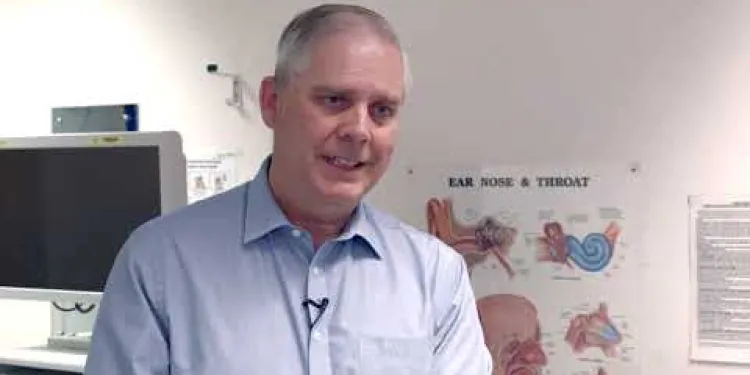
Evidence-Based Interventions: tonsillectomy for recurrent tonsillitis surgery
Relevance: 78%
-

Having chemotherapy and other treatments in the Day Treatment Unit
Relevance: 34%
-

Is there a treatment for measles?
Relevance: 33%
-

Is there a treatment for measles?
Relevance: 33%
-

Are chiropractic treatments safe?
Relevance: 32%
-

Is Botox treatment expensive?
Relevance: 32%
-

Are chiropractic treatments painful?
Relevance: 32%
-

What is the treatment for appendicitis?
Relevance: 32%
-

Eating disorders: treatment
Relevance: 32%
-

Is Paillon treatment a form of chemotherapy?
Relevance: 31%
-

What is Paillon treatment for cancer?
Relevance: 31%
-
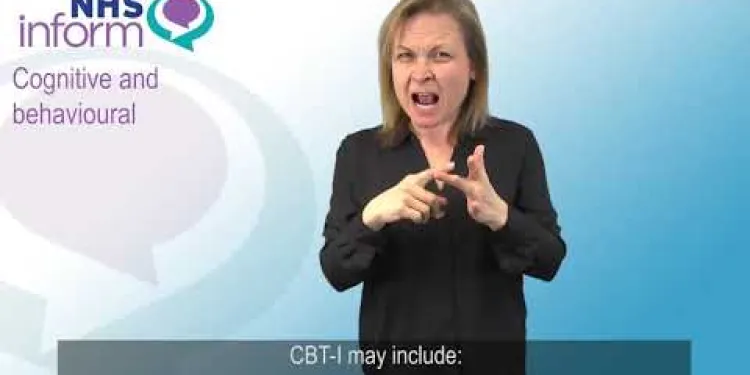
BSL - Treatments for insomnia
Relevance: 31%
-

Who developed the Paillon treatment?
Relevance: 31%
-

How is Paillon treatment administered?
Relevance: 31%
-

Is Paillon treatment FDA approved?
Relevance: 31%
-

Is a prescription required for Paillon treatment?
Relevance: 31%
-

Fertility treatments on the up, but not via the NHS
Relevance: 31%
-

What are topical treatments for psoriasis?
Relevance: 31%
-

What treatments are available for eczema?
Relevance: 30%
-

What is the treatment for chickenpox?
Relevance: 30%
-

Are homeopathic treatments covered by the NHS?
Relevance: 30%
-
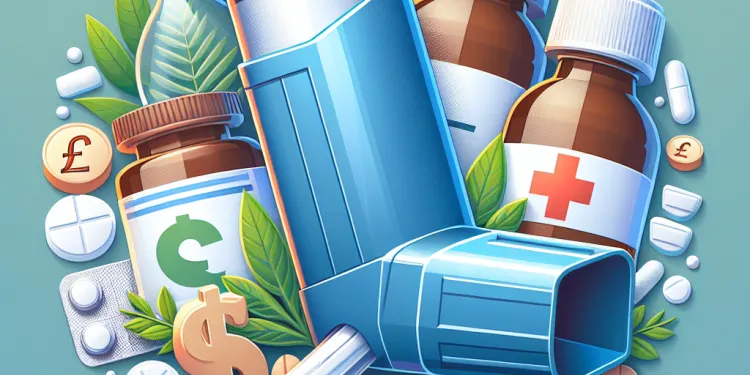
Are inhalers the only treatment for asthma?
Relevance: 30%
-

What is the treatment for bacterial meningitis?
Relevance: 30%
-

What are common treatments for ADHD?
Relevance: 30%
-

What treatments are available for shingles?
Relevance: 30%
-
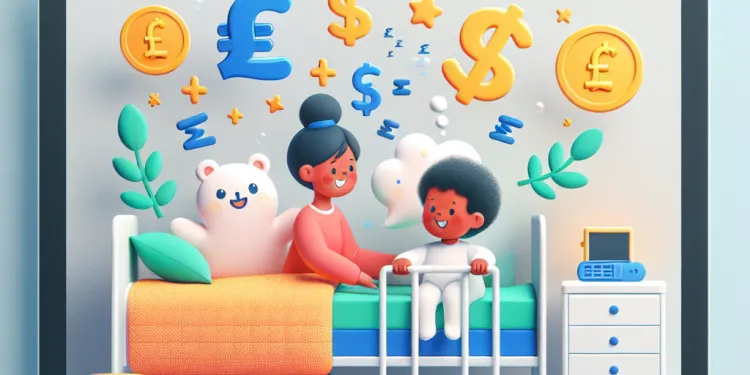
Can children have sleep apnea?
Relevance: 30%
-

What treatments are available for shingles?
Relevance: 30%
-

What are the treatment options for BPH?
Relevance: 30%
-

What treatments are available for obesity?
Relevance: 30%
-

The treatment approach for an eating disorder
Relevance: 30%
-

Are there treatments for West Nile Virus?
Relevance: 30%
-
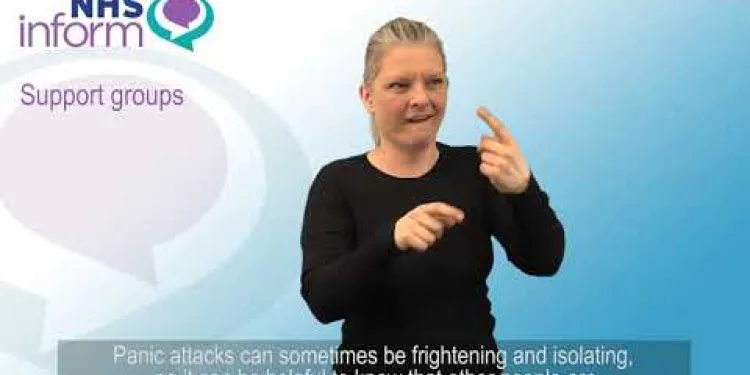
BSL - Treatment of panic disorder
Relevance: 30%
-

Are there treatments available for postnatal depression?
Relevance: 30%
-

Hernias and their Treatments - A guide for patients
Relevance: 29%
-

What are the success rates of Paillon treatment?
Relevance: 29%
-

What is the new treatment for hepatitis C like?
Relevance: 29%
-

What are the costs associated with Paillon treatment?
Relevance: 29%
-

What treatment options are available for psoriasis?
Relevance: 29%
How to Treat Tonsillitis | NHS
Understanding Tonsillitis
Tonsillitis is an infection of the tonsils, two small glands located at the back of your throat. It's common in children but can occur at any age. Symptoms include a sore throat, difficulty swallowing, and swollen tonsils. Other symptoms may include fever, cough, headache, and a hoarse voice. It's usually caused by viral infections but can also be due to bacterial infections.Home Remedies and Self-Care
In most cases, tonsillitis can be treated at home with some simple self-care measures. These include:- Rest: Ensure you get plenty of rest to help your body fight off the infection.
- Hydration: Drink plenty of fluids to keep your throat moist and soothe irritation.
- Pain Relief: Over-the-counter pain relievers such as paracetamol or ibuprofen can help reduce pain and inflammation.
- Gargling: Gargling with warm salt water several times a day can help reduce swelling and pain.
- Humidifiers: Using a humidifier can keep the air moist, which eases throat discomfort.
When to See a GP
It's important to consult your GP if symptoms persist for more than four days, or if you experience severe symptoms such as difficulty breathing, difficulty swallowing, or extreme pain. Your GP can determine if you have a bacterial infection that requires antibiotics.Medical Treatments and Antibiotics
If tonsillitis is caused by a bacterial infection, your GP may prescribe antibiotics. It's crucial to complete the entire course of antibiotics even if you start to feel better. This helps to ensure that all the bacteria are killed and reduces the risk of the infection returning. In some cases, recurring tonsillitis may require a surgical procedure called a tonsillectomy to remove the tonsils.Preventing Tonsillitis
To reduce the risk of contracting tonsillitis, practice good hygiene such as frequent hand washing, using hand sanitiser, and avoiding close contact with people who are sick. Avoid sharing eating utensils and other personal items. Keeping your immune system strong by maintaining a healthy diet and getting regular exercise can also help prevent infections. By following these guidelines from the NHS, you can efficiently manage and treat tonsillitis and know when to seek further medical attention.How to Treat Tonsillitis
What is Tonsillitis?
Tonsillitis is when the tonsils get infected. Tonsils are two small glands in your throat. It happens a lot in kids but can happen to anyone. Signs include a sore throat, trouble swallowing, and swollen tonsils. You might also have a fever, cough, headache, or a hoarse voice. Most times, a virus causes tonsillitis, but sometimes bacteria do.Things You Can Do at Home
You can often treat tonsillitis at home by doing some simple things:- Rest: Make sure you sleep and rest a lot to help your body get better.
- Drink: Drink lots of fluids to keep your throat wet and feel better.
- Pain Relief: You can take medicine like paracetamol or ibuprofen to help with pain and swelling.
- Gargling: Gargle with warm salt water a few times every day to reduce swelling and pain.
- Humidifiers: A humidifier adds moisture to the air, which can make your throat feel better.
When to Visit a Doctor
You should see your doctor if you still feel sick after four days or if you have very bad symptoms like trouble breathing or swallowing, or lots of pain. Your doctor can tell if you need medicine for bacteria.Medicine from Doctors
If bacteria cause your tonsillitis, your doctor might give you antibiotics. It’s very important to take all the medicine, even if you feel better. This makes sure all the bacteria go away. Sometimes, if you get tonsillitis a lot, the doctor might suggest surgery to take the tonsils out.How to Stop Getting Tonsillitis
To stay healthy and avoid tonsillitis, wash your hands often, use hand sanitiser, and stay away from sick people. Don’t share things like forks, spoons, or cups. Eating healthy and exercising can help keep your immune system strong and fight infections. These tips can help you take care of tonsillitis. Always know when to get more help from a doctor.Frequently Asked Questions
What is tonsillitis?
Tonsillitis is an infection of the tonsils, two masses of tissue at the back of your throat, that causes them to become sore and swollen.
What are the common symptoms of tonsillitis?
Common symptoms include a sore throat, difficulty swallowing, red and swollen tonsils, white or yellow coating on the tonsils, fever, and swollen lymph nodes in the neck.
Is tonsillitis contagious?
Yes, tonsillitis can be contagious, especially if it is caused by bacterial or viral infections. It can spread through droplets from coughing, sneezing, or close contact.
What causes tonsillitis?
Tonsillitis can be caused by both viruses and bacteria. Viral infections are more common, including those from the common cold or flu. Bacterial infections such as Streptococcus can also cause tonsillitis.
How is tonsillitis diagnosed?
A doctor can diagnose tonsillitis by examining your throat and sometimes conducting a throat swab or blood test to determine the cause of the infection.
What treatments are available for tonsillitis?
Treatments include pain relief with over-the-counter medications like paracetamol or ibuprofen, staying hydrated, throat lozenges, and rest. In some bacterial cases, antibiotics may be prescribed.
When should I see a doctor for tonsillitis?
You should see a doctor if symptoms are severe, lasting more than four days, if you have difficulty breathing or swallowing, or if you frequently get tonsillitis.
Can tonsillitis be treated at home?
Yes, mild tonsillitis can often be treated at home with rest, hydration, pain relief, and throat soothing measures.
Are there any dietary restrictions while having tonsillitis?
It’s best to avoid very hot, cold, or spicy foods. Eating soft foods and drinking plenty of fluids, such as water, soups, and herbal teas, can help soothe your throat.
Can tonsillitis cause complications?
Complications are rare but can include abscesses around the tonsils, spread of infection, and in chronic cases, sleep apnoea or difficulty breathing.
What is chronic tonsillitis?
Chronic tonsillitis is when you have recurring episodes of tonsillitis or long-lasting symptoms that do not completely go away.
Is surgery an option for tonsillitis?
Yes, surgery to remove the tonsils (tonsillectomy) may be considered in cases of recurrent or chronic tonsillitis or if complications arise.
How long does tonsillitis usually last?
Most cases of tonsillitis last about 7 to 10 days with proper treatment and rest.
Can adults get tonsillitis?
Yes, while tonsillitis is more common in children, adults can also get tonsillitis.
How can I prevent tonsillitis?
Good hygiene practices such as regular handwashing, avoiding close contact with sick individuals, and not sharing eating utensils can help prevent the spread of infections that cause tonsillitis.
What is tonsillitis?
Tonsillitis means your tonsils are sore and swollen. Tonsils are two small lumps in the back of your throat. They help your body fight germs.
If you have tonsillitis, it might hurt to swallow or talk. Your throat might feel scratchy or hurt.
If you think you have tonsillitis, tell an adult. A doctor can help you feel better.
Try to drink warm drinks and get lots of rest.
Tonsillitis is when the tonsils get infected. Tonsils are two lumps of tissue at the back of your throat. When they are infected, they can feel sore and get bigger.
What signs show you might have tonsillitis?
Some signs you might notice are a sore throat, trouble swallowing, red and puffy tonsils, white or yellow stuff on the tonsils, a fever, and bumps on your neck that feel bigger than usual.
If reading is hard, you can use pictures to help understand the words. You can also read with someone else or use a tool that reads the words out loud for you.
Can I catch tonsillitis from someone?
Tonsillitis means your tonsils are sore and swollen. It can happen because of germs like viruses or bacteria.
Yes, you can catch tonsillitis from someone else. This is because the germs can spread when people cough, sneeze, or share food and drinks.
To stay healthy, wash your hands often and cover your mouth with your elbow when you cough or sneeze. This helps stop germs from spreading.
Yes, you can catch tonsillitis from other people. If it is caused by germs like bacteria or viruses, it can spread easily. You can catch it when someone coughs, sneezes, or if you are close to them.
What makes tonsils sore?
Tonsils can get sore or swollen. This is called tonsillitis. Here are some reasons why:
- Germs called viruses. They can make you sick, like a cold.
- Germs called bacteria. They can make your throat hurt.
If you have questions or feel unwell, ask a trusted adult or a doctor for help.
Tonsillitis is when your throat gets really sore. It can happen because of germs called viruses or bacteria.
Viruses are tiny germs that can make you sick. They are the ones that give you a cold or the flu. These are the most common reasons for tonsillitis.
Bacteria are also tiny germs, but they can be stronger than viruses. One type of bacteria called "Streptococcus" can cause tonsillitis too.
If you get a sore throat, a grown-up can help you feel better by giving you medicine or soup. Talking to a doctor can help a lot.
How do doctors know if you have tonsillitis?
A doctor can find out if you have tonsillitis by looking at your throat. They might also use a cotton stick to check your throat or take a little bit of blood to see what is making you sick.
What can help if you have tonsillitis?
Tonsillitis is when your throat is sore and your tonsils are swollen. Here are some ways to feel better:
- See a Doctor: A doctor can check and tell you what to do.
- Medicine: You might need medicine to help. A doctor can give this to you.
- Rest: Stay in bed and rest a lot. This helps your body get better.
- Drink Fluids: Drink water and warm drinks like tea or soup.
- Gargle Salt Water: You can mix salt with warm water and gargle it to help your throat feel better.
If you need help understanding, ask someone you trust to read with you. You can also use pictures or videos to help explain.
If you have a sore throat, here are some things that can help you feel better:
- To help with pain, you can take medicine like paracetamol or ibuprofen. You can buy these at the store.
- Drink lots of water to stay hydrated. This helps your body feel good.
- Sucking on throat lozenges can make your throat feel better.
- Make sure to get plenty of rest to help your body heal.
- If your sore throat is caused by bacteria, the doctor might give you antibiotics to help you get better.
You can also use things like reading tools that make the words bigger or special apps that read the text out loud to you.
When should I go to the doctor for a sore throat?
If you have a sore throat for a few days, and it hurts a lot, you might need to see a doctor.
Here are some signs to tell an adult:
- You have trouble breathing or swallowing.
- Your throat is very red and swollen.
- You feel very hot or have a fever.
- You have a sore ear or tummy.
- You feel tired all the time.
If you have these problems, tell an adult to help you see a doctor.
Your doctor can help find out what's wrong and make you feel better.
To make reading easier, use reading tools like audiobooks or ask someone to read with you.
Go to the doctor if you feel very sick, if you have been sick for more than four days, if you can't breathe or swallow easily, or if you often get a sore throat.
Can you help a sore throat at home?
If your throat is sore, you might have tonsillitis. Tonsillitis can sometimes get better at home. Here are some ways to help:
- Drink warm drinks like tea or soup.
- Eat soft foods that are easy to swallow.
- Rest and sleep a lot to help your body heal.
- Gargle with warm salty water, but don’t swallow it.
- Take medicine for pain if a doctor or an adult says it’s okay.
If you feel very sick or your throat hurts a lot, tell an adult. They can help you see a doctor.
Yes, if you have a sore throat because of mild tonsillitis, you can usually feel better at home by resting. Drink lots of water, and take medicine if it hurts. You can also try things that make your throat feel better.
What foods should I eat or avoid when I have tonsillitis?
Don't eat very hot, very cold, or spicy foods. Eat soft foods and drink lots of liquids like water, soup, and herbal tea. These can help make your throat feel better.
Can tonsillitis lead to other problems?
If you have tonsillitis, it sometimes can cause other health problems.
Here are some things that might help you understand better:
- Use simple, clear words to talk about your health.
- Look at pictures or diagrams of the body to see where the tonsils are.
- Ask someone to explain any hard words you don't know.
Problems don't happen often, but they can include:
- Pockets of pus (called abscesses) around the tonsils.
- Infection spreading to other parts of the body.
- In long-term cases, trouble sleeping or breathing.
If you're worried or having trouble, ask a doctor or nurse for help. Try using picture cards or ask someone you trust to explain things more simply.
What is long-term tonsillitis?
Tonsillitis is when your tonsils get sore and swollen. The tonsils are two small lumps in the back of your throat. They help fight germs. Chronic means it lasts a long time or keeps coming back.
If you have tonsillitis that won't go away, it is called "chronic tonsillitis." You might have a sore throat or trouble swallowing. It can make you feel tired.
To help with reading, you can:
- Use a ruler or your finger to keep your place.
- Ask someone to read with you.
- Look for pictures to help understand.
Chronic tonsillitis means getting sore and swollen tonsils often, or having symptoms that stick around for a long time.
Can you have an operation for sore tonsils?
Tonsillitis means your tonsils are swollen and hurt. Sometimes, doctors can do an operation to take out the tonsils. This is called a tonsillectomy.
Here are some tools that might help you:
- Ask your doctor or nurse to explain things to you.
- Use pictures or videos to understand better.
- Ask someone you trust to come with you to the doctor.
Yes, doctors might do an operation to take out the tonsils. This is called a tonsillectomy. They might do this if someone keeps getting tonsillitis or has other problems because of it.
How long does a sore throat last?
A sore throat with swollen tonsils is called tonsillitis.
It usually gets better in 7 to 10 days.
If you are not feeling well, tell a grown-up.
Grown-ups can take you to see a doctor or get you medicine if needed.
Drink water and rest to feel better.
Most people get better from tonsillitis in about 7 to 10 days if they have the right treatment and rest.
Can grown-ups get a sore throat from tonsils?
Yes, kids usually get tonsillitis, but grown-ups can get it too.
How can I stop getting a sore throat?
Here are some simple tips to help keep your throat healthy:
- Wash your hands often to keep germs away.
- Avoid sharing cups, plates, and forks with other people.
- Stay away from people who are sick.
- Drink lots of water to keep your throat moist.
- Eat healthy foods like fruits and vegetables.
- Brush your teeth twice a day to keep your mouth clean.
- Use tissues when you sneeze or cough, and throw them away right after.
Ask an adult to help you if you don't know how to do these things.
It's important to keep clean to stop getting sick. Wash your hands often. Don't get too close to people who are sick. Don't share things like forks and spoons with others. This can help stop germs that make your throat hurt.
Useful Links
- Ergsy carfully checks the information in the videos we provide here.
- Videos shown by Youtube after a video has completed, have NOT been reviewed by ERGSY.
- To view, click the arrow in centre of video.
- Most of the videos you find here will have subtitles and/or closed captions available.
- You may need to turn these on, and choose your preferred language.
- Go to the video you'd like to watch.
- If closed captions (CC) are available, settings will be visible on the bottom right of the video player.
- To turn on Captions, click settings .
- To turn off Captions, click settings again.
More Items From Ergsy search
-

Help with tonsillitis
Relevance: 100%
-

How to treat tonsillitis | NHS
Relevance: 92%
-

Evidence-Based Interventions: tonsillectomy for recurrent tonsillitis surgery
Relevance: 78%
-

Having chemotherapy and other treatments in the Day Treatment Unit
Relevance: 34%
-

Is there a treatment for measles?
Relevance: 33%
-

Is there a treatment for measles?
Relevance: 33%
-

Are chiropractic treatments safe?
Relevance: 32%
-

Is Botox treatment expensive?
Relevance: 32%
-

Are chiropractic treatments painful?
Relevance: 32%
-

What is the treatment for appendicitis?
Relevance: 32%
-

Eating disorders: treatment
Relevance: 32%
-

Is Paillon treatment a form of chemotherapy?
Relevance: 31%
-

What is Paillon treatment for cancer?
Relevance: 31%
-

BSL - Treatments for insomnia
Relevance: 31%
-

Who developed the Paillon treatment?
Relevance: 31%
-

How is Paillon treatment administered?
Relevance: 31%
-

Is Paillon treatment FDA approved?
Relevance: 31%
-

Is a prescription required for Paillon treatment?
Relevance: 31%
-

Fertility treatments on the up, but not via the NHS
Relevance: 31%
-

What are topical treatments for psoriasis?
Relevance: 31%
-

What treatments are available for eczema?
Relevance: 30%
-

What is the treatment for chickenpox?
Relevance: 30%
-

Are homeopathic treatments covered by the NHS?
Relevance: 30%
-

Are inhalers the only treatment for asthma?
Relevance: 30%
-

What is the treatment for bacterial meningitis?
Relevance: 30%
-

What are common treatments for ADHD?
Relevance: 30%
-

What treatments are available for shingles?
Relevance: 30%
-

Can children have sleep apnea?
Relevance: 30%
-

What treatments are available for shingles?
Relevance: 30%
-

What are the treatment options for BPH?
Relevance: 30%
-

What treatments are available for obesity?
Relevance: 30%
-

The treatment approach for an eating disorder
Relevance: 30%
-

Are there treatments for West Nile Virus?
Relevance: 30%
-

BSL - Treatment of panic disorder
Relevance: 30%
-

Are there treatments available for postnatal depression?
Relevance: 30%
-

Hernias and their Treatments - A guide for patients
Relevance: 29%
-

What are the success rates of Paillon treatment?
Relevance: 29%
-

What is the new treatment for hepatitis C like?
Relevance: 29%
-

What are the costs associated with Paillon treatment?
Relevance: 29%
-

What treatment options are available for psoriasis?
Relevance: 29%


